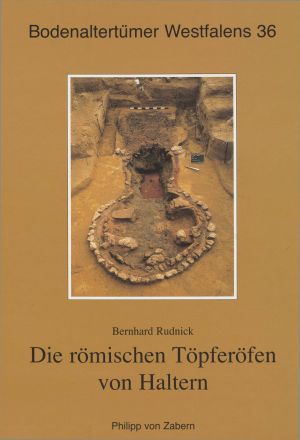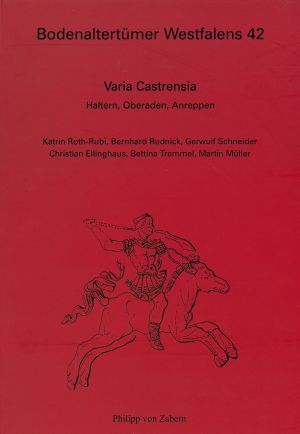Rudnick, Bernhard
Die verzierte Arretina aus Oberaden und Haltern
The publication of the decorated Arretine ceramics from the Roman encampments on the river Lippe at Oberaden and Haltern is of great interest, above all because historical events as well as dendrochronological and numismatic investigations have established the dating of the camps to the period between 11 BC and AD 9.
Against this background, the determination of specific potters and places of manufacture of the pieces found in Oberaden and Haltern is the main aim of this work. For this purpose, both the decorations and potter's stamps are examined and chemical analyses are taken into account. The typological and chronological classification of the vessels and finally a comparison of certain find sites should help to date the potteries themselves and their delivery times in the sales areas more precisely. This also provides an overview of the range of shapes and motifs used by certain potters within the firmly defined period and find area.
With the presentation of the decorated Arretina, the complete stock of Terra Sigillata from Haltern is now published.
This thesis was accepted as a dissertation at the Westfälische Wilhelms-Universität Münster in 1991.
Die römischen Töpfereien von Haltern
From 1990 to 1993, in front of the porta praetoria of the main camp in Haltern, a pottery district was discovered and archaeologically investigated, which existed at the same time as the camp. Unambiguous workshop buildings could not be identified, because the excavation section was too small. However, several kilns and pottery were uncovered. The range of types produced is considerably broader than in other Augustan military pottery workshops, and at the same time some types, such as the cooking pot types Ha 56 to 58, were produced in a veritable mass production.
The entire pottery district T8 was levelled in Roman times. Skeletons of 24 probably male individuals and one dog were uncovered, which had been thrown into the working pit of kiln 10 without grave goods and were covered with the rubble. Since both Germanic tribes and Romans would have cremated and buried their own dead, these are probably Germanic warriors who were buried after an attack.
Anthropological, archaeomagnetic, geochemical and mineral analyses of finds and features complete the investigation.
Varia Castrensia: Haltern, Oberaden, Anreppen
In the present volume, several authors present new finds from the Roman encampments of Haltern, Oberaden and Anreppen on the right bank of the Rhine in seven contributions. The first three contributions by K. Roth-Rubi, B. Rudnick and G. Schneider deal with the stamped Terra Sigillata found in Haltern and Oberaden over the past few decades and clearly document the places of origin of the ceramic with detailed diagrams and tables. C. Ellinghaus deals with the imagery of Roman legionaries and use the finds to shed light on the social history of Roman soldiers. With the glass vessels and glass beads from the three Lippe encampments, B. Tremmel presents one of the most important glass complexes of the early roman imperial period. M. Müller concludes with a helmet find and gives in a further contribution an overview of the range of forms of Roman bronze vessels from Oberaden based on two new finds.









